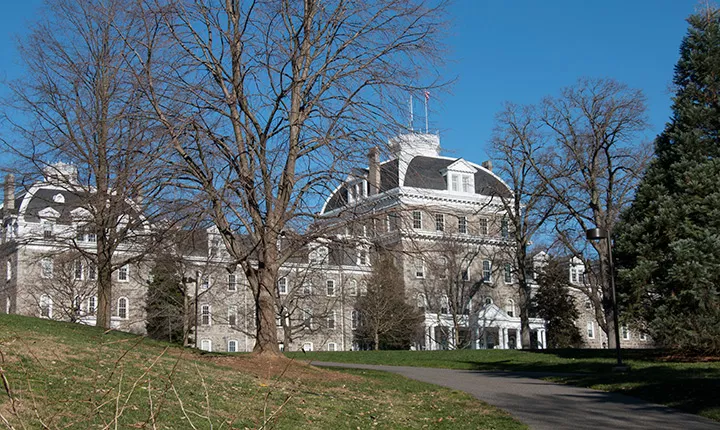Board Approves 2016-17 Budget, Creates New Carbon Charge

At its meeting this weekend, Swarthmore's Board of Managers approved the budget for the College's 2016-17 fiscal year. The budget includes $300,000 for a new carbon charge, initially proposed by a working group of members of the faculty and staff this fall, that will provide funding for campus initiatives and projects that increase energy conservation and efficiency and promote renewable energy. The carbon charge will also increase the visibility of the campus’ sustainability programs and aid in the College’s efforts to include the entire campus community in the effort to address climate change.
Much of Swarthmore’s energy for heating its buildings comes through the heat plant on campus. For the College's 68 buildings, that translates to about 100 million cubic feet of natural gas and about 13.5 million kilowatt hours of electricity that are processed each year. Last year, Swarthmore emitted roughly 4535 metric tons of carbon dioxide (down from closer to 7257 metric tons 10 years ago). The College has also purchased renewable energy credits in the form of wind power since 1999 and now offsets 100 percent of its greenhouse gas emissions from electricity use.
“With the College’s sustainability framework, we are already making strides to reach our commitment to carbon neutrality by 2035,” says Director of Sustainability Aurora Winslade, who will chair a committee that oversees the fund. “I’m looking forward to determining how the carbon charge can further help us meet and expand our goals.”
In the short term, Winslade says those goals include levying this charge against the budgets of all academic and operational departments at the College. The longer term goal, she adds, is to more directly tie the charge to actual emissions.
“My hope is that we can use these funds to establish a green revolving loan fund,” she says. “The idea is that we will be able to ‘loan’ ourselves the money to pay for projects that will generate financial savings, such as energy efficiency retrofits, then ‘pay ourselves back’ out of the savings or avoided costs. That way, we are constantly replenishing the fund to create an ongoing source of capital.”
This approach, she says, is at the forefront of sustainability efforts. “Currently, only a handful of higher education institutions have established carbon pricing initiatives,” says Winslade, who came to Swarthmore in December with more than 10 years of experience in implementing sustainable initiatives in both academic settings and the private sector. “However, I believe it represents the next wave in thinking. Green revolving loan funds are more common, but none that I know of have generated the capital out of carbon charges such as we are proposing.”
Recognizing the need to balance long-term financial sustainability with the immediate demands to meet the expenses of the College, the Board adopted the 2016-17 operating and capital budgets and authorized the launch of a comprehensive campaign. Highlights include:
- Student charges. A 3.5 percent increase in student charges brings the cost for full-paying students to $63,550 for the upcoming academic year. This amount is in the middle range of the College’s peer institutions. As Swarthmore continues its efforts to improve access to students from all socio-economic backgrounds, the financial aid budget is increasing by 19 percent for the coming year. Net revenue from student charges, due to the anticipated increases in financial aid, will actually decline from 2015 to 2016-17.
- Endowment spending. The College increasingly relies on its endowment to meet the growing demands on the expense side of the budget, including on-going improvements to technology and classroom spaces, outreach to prospective students, improving opportunities for internships and research fellowships, debt service, and compliance with increasingly complex government regulations. Budgeted endowment spending will increase next year by 11.3 percent. Due to market volatility and the negative returns experienced so far during this fiscal year, the endowment spending rate for 2016-17 and the next few years is projected to approach 5.0 percent, the outer limit of the College’s endowment spending policy.
- Fundraising. The Board approved a comprehensive campaign with a goal of $450 million. The campaign will officially launch later this fall and is expected to be completed in 2020.
- Strategic Initiatives. For the fourth year, and in support of the College’s strategic initiatives, Swarthmore plans to increase enrollment by 20 students in 2016-17. This reflects a cumulative increase of 80 students over the past four years. To meet the needs of these students, the College will continue to hire additional faculty, as well as proceed with plans to construct a new residence hall behind Palmer, Pittenger, and Roberts Halls, among other initiatives.



